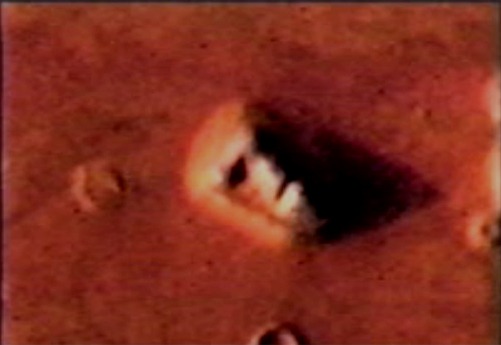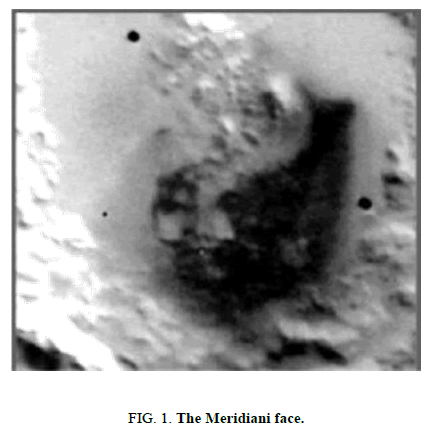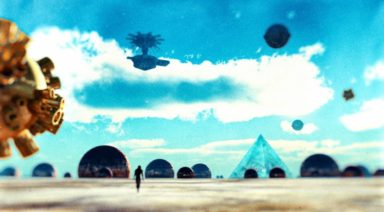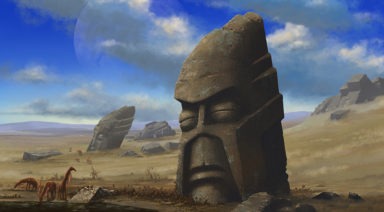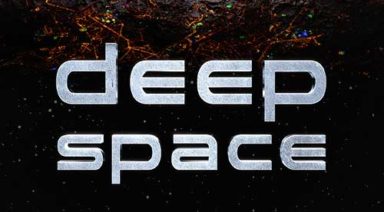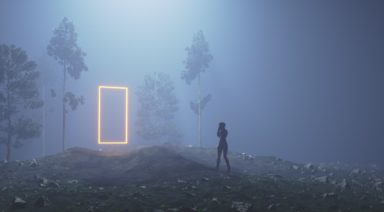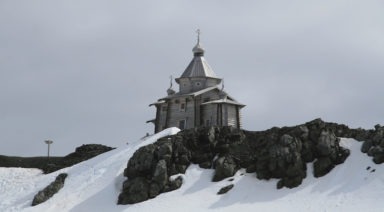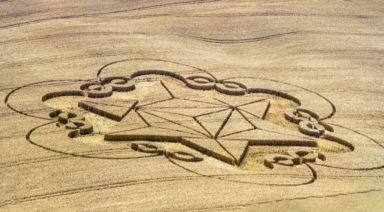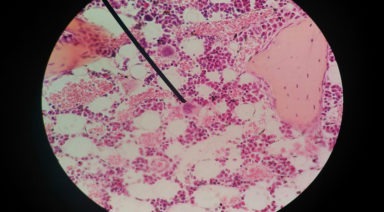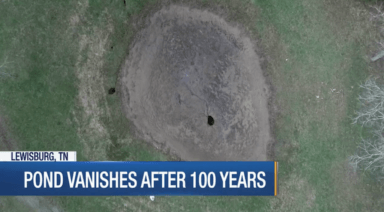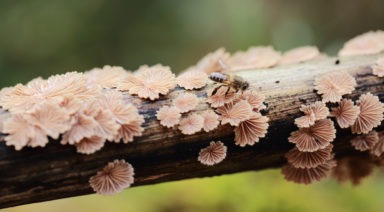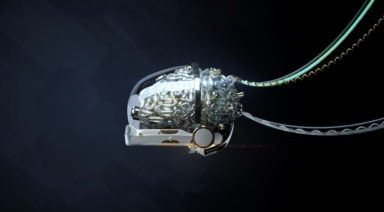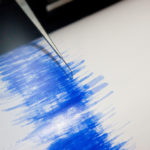Do These 7 Strange Features Show Life on Mars?
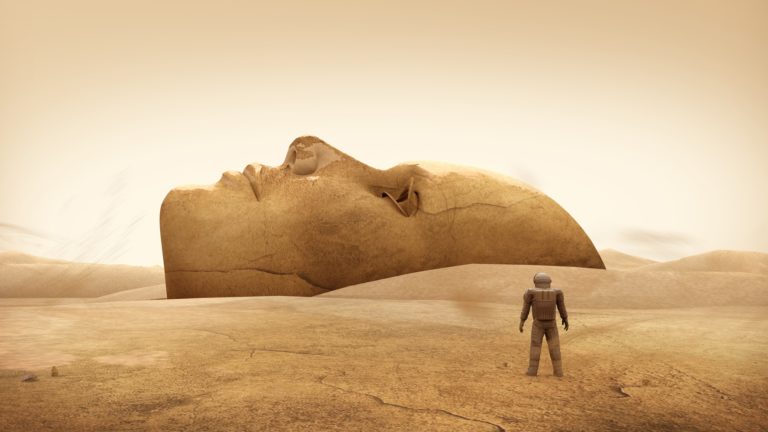
Over the past several decades, there have been numerous features uncovered that seem to show evidence of intelligent life that either inhabited or visited other planets in our solar system. This plethora of evidence has been a point of contention between ufologists and NASA, most notably the face on Mars’ Cydonia region.
Some of it can be easily brushed off as simply the product of shadows, lighting, or a little trick our brains play on us called pareidolia, which makes us see faces and familiar objects in the mundane. But could there actually be something behind this very convincing recurrence of inexplicable faces and structures, pointing toward an advanced civilization? With the discovery of flowing water on Mars, the answer seems like it might be yes.
1. The Face on Mars
The most commonly known and probably the most distinct of the unexplained features can be seen in images of the face on Mars in its Cydonia region. This face was originally found by two NASA contractors named, Vincent DiPietro and Gregory Molenaar. The two found images of the face taken by NASA’s Viking satellites which became a source of study and debate that continues today. The face appears to be wearing a helmet or headdress and further analysis seems to show teeth as well as the presence of eyes in the sockets. The face is quite large stretching almost two miles in length and just over one mile in width. And despite skeptics’ view that our ability to see a face is simply a play of shadows, multiple images and lighting angles have shown that the face is symmetrical. Other such faces of similar size and likeness were found and imaged in an area of Mars referred to as the Utopia region.
The face on Mars’ coordinates are: 40.74813 N 9.70136 W
Below are images of the face on Mars:
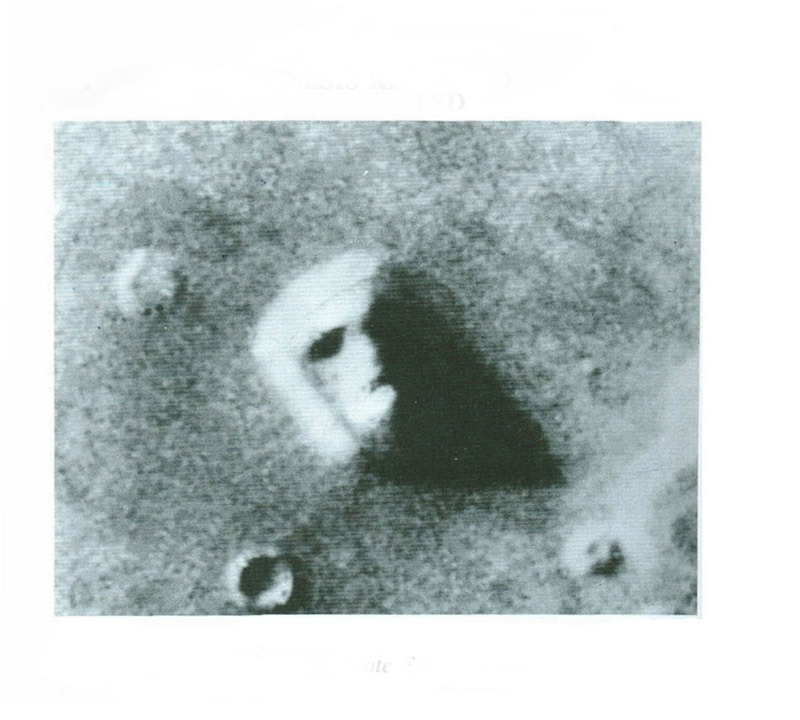
2. The Pyramids at Cydonia
What makes the face at Cydonia and its location so intriguing is that there are also several pyramids there. One can see these pyramidal shapes which appear to be grouped together and almost too distinct to be naturally occurring. Some believe that the layout of the pyramids as well as other features, such as a spiraled mound and buttress walls, point to the organized layout of a city. In addition, one feature known as the “D&M” pyramid, is distinctly five-sided and much larger than any pyramid on Earth.
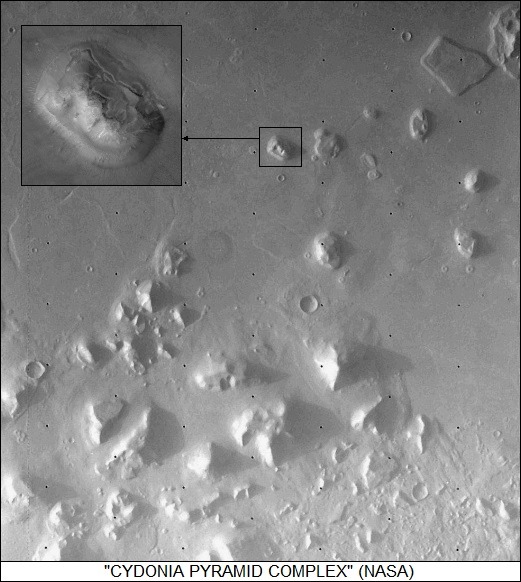

The “D&M” Pyramid source: www.enterprisemission.com/sheep.htm
3. The Crowned Face
The Crowned Face, also referred to as the King’s Face is 11 miles wide and located in the Libya Montes region of Mars. The image shows a face with much greater detail than the face at Cydonia with distinct features and what appears to be a crown. Some have interpreted the right half of the visage to be the profile of a female face looking to the left, while others see layered faces. Since the face is not shadowed to the extent that the Cydonia face is, it is harder to dismiss as pareidolia.
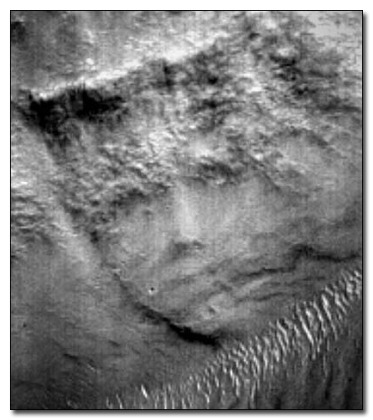
Source: thecydoniainstitute.proboards.com/thread/43/crown-face
4. The Sumerian Face
This imagery from NASA appears to show a rock face that bears a striking resemblance to statues of ancient Sumerian gods. This picture compares the rock face to a statue of Nabu, the Sumerian God of literacy and wisdom. Could this be evidence that the Anunnaki once visited an ancient civilization on the red planet?
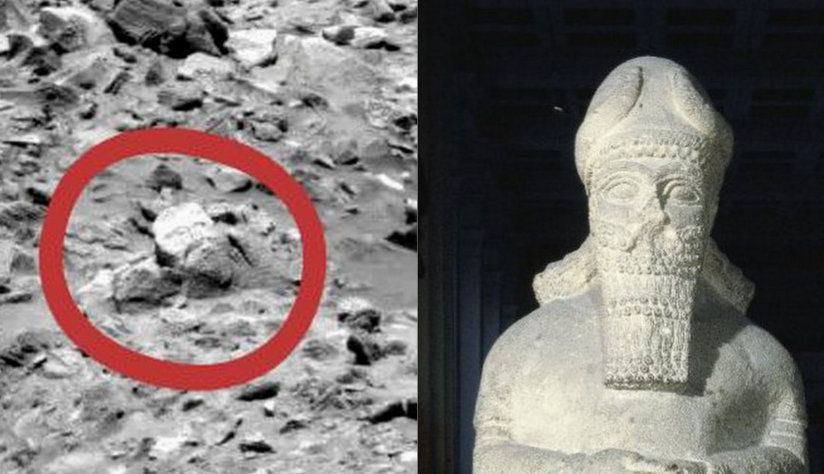
Source: cnet.com/news/ufo-fanatics-spot-ancient-god-on-mars/
5. Rock Face Buried in Sand
This particular face, found in an outcropping of rocks, also bears some semblance to depictions of Sumerian gods. This rock face is found half-buried in the sand and looks to be distinctly carved.
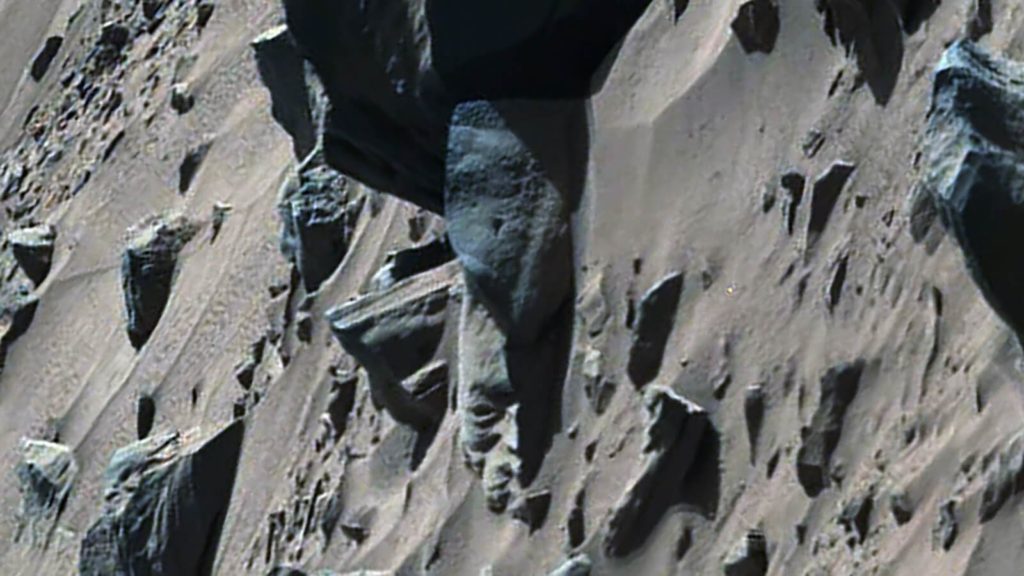
Source: projectblueworld.com
6. Egyptian-like Statues
Images taken by a NASA rover in the Victoria Crater purport to show what look like statues embedded in a cliff. These statues bear an uncanny resemblance to Egyptian sarcophagi or statues of the Annunaki of Ancient Sumer.
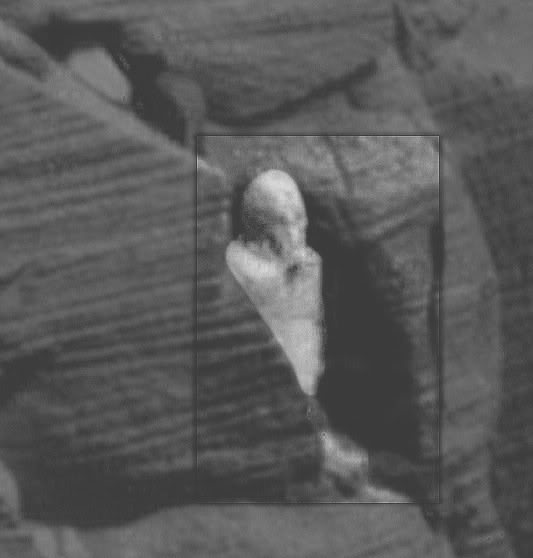
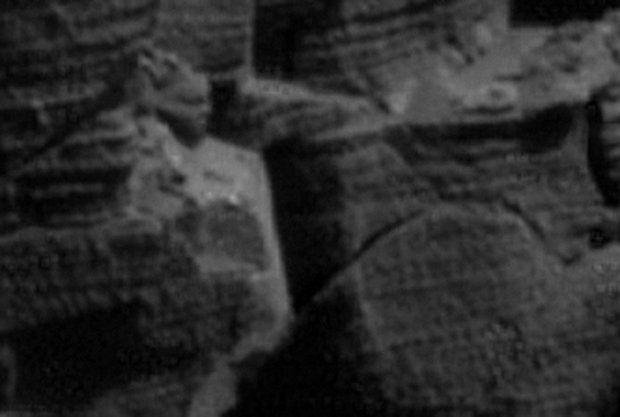
Source: disclose.tv/news/has_nasa_discovered_an_annunaki_statue_on_mars
7. The Meridiani Face
Although it is on of the least distinct faces of all of those spotted on Mars, the face on the Meridiani Planum is thought to be another source of evidence of possible intelligent creation. Two eyes that are closed or squinting can be seen with a large nose and protruding cheekbones. The Meridiani plain is located near Mars’ equator. What do you make of it?
The Alternative 3-Secret Space Program Connection
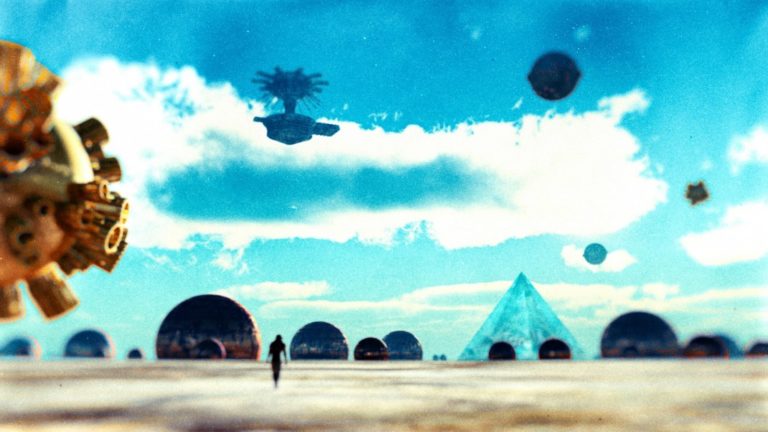
In 1977, a British television program titled Science Report: Alternative 3, part of an Anglia TV documentary series, aired and planted the seed of fear about an alien invasion in society at large. The program focuses on the disappearances of prominent scientists, engineers, and astronomers. The speculation is that the Earth is collapsing and will soon be unable to support human life, so these people have been taken by several governments acting together in an intergovernmental Secret Space Program (SSP) with the goal of developing colonies on other planets, using the moon as a way-station.
If you ever have a chance to view the program, it is so convincing that you will want to volunteer for the SSP, pack up your family, and head for Mars. However, there is only one known copy: it is in the possession of Alternative 3’s director. It is thought to be fading and grainy due to the passage of time. All other copies of the program were destroyed as were all contracts and any paperwork referencing the show as if the program never existed.
Although the TV program aired in June of 1977, the producers claimed it was originally intended to air on April Fool’s Day. Workers in the industry were striking, so the air date was postponed. When it did air, the reaction of viewers was reminiscent of the 1938 radio broadcast by Orson Wells of “The War of the Worlds,” which created civil unrest and havoc. The broadcast was meant to be a joke, but thousands of people in the U.S. thought the Earth was being invaded by Martians. They hit the streets in panic, not knowing what to do next or how to escape.
The program was so disturbing it was only shown once in England and once in Australia. The U.S. refused to air the program. It was never shown anywhere again. Even though the directors and producers of Alternative 3 were adamant that it was fiction, questions still abound. Is there some truth to the Alternative 3 theory?
Are there three alternatives for Earth inhabitants in case there is a catastrophic event that threatens the habitability of the planet? Thousands of people disappear every year, never to be heard from again. Could these people have been abducted to develop a Breakaway Civilization on the moon or another planet, like Mars?
Fact or Fiction?
Immediately after it aired, the producers of the program announced it had been fiction. The slot where Alternative 3 aired was one that routinely ran documentary episodes. The title of the series was Science Reports and Alternative 3 was the title of just one segment; it was the last program of the season of the Science Reports.
The program was created by reputable reporters and researchers who were well respected for their documentaries. Why would they risk their reputation by airing such a hoax? Was it really a hoax or was it a disguised message to the public about a secret space program?
A book with the same title, Alternative 3, was subsequently written by Leslie Watkins. It presented some of the theories of the alleged hoax as truth. The book and the television program promoted the idea that astronauts had landed on Mars in 1962 in a joint U.S./U.S.S.R. effort and definitively identified intelligent extraterrestrial life. It also promoted the idea that climate change was just one thing that could soon make the Earth uninhabitable.

